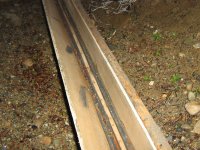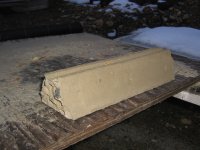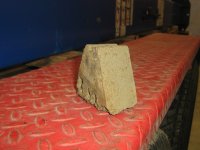When hiring a concrete contractor, there are a few red flags that jump out beforehand, but are too late to deal with afterwards. Anybody using mesh instead of rebar needs to be avoided!!!! It's not even debatable, mesh is impossible to walk on and spread concrete. It is impossible to pull it up while spreading concrete and for it to remain inside the slab while walking on it. If they say they can do this, they are lying.
Rebar on 24 inch centers should be the minimum. For my own stuff, I do it at 16 inches. That gives me enough room to walk between it, with a lot more strength for minimal expense.
Fiber doesn't hurt, but it doesn't replace rebar.
The number one reason concrete cracks is from too much water added to the mix. In commercial jobs, they do a slump test where you scoop up some of the concrete in a small one quart container and turn it upside down just like kids do at the beach when building a sand castle. The concrete should hold that shape. If it's like soup, they have too much water in it. They add extra water because that makes it a lot easier to spread out. Spreading it dry enough to pass the slump test on a residential job isn't practical, but I mentioned it to show the degree of ideal, and what you have to deal with.
When water evaporates from the mix, the concrete has less volume and it cracks. The less water that evaporates, the smaller the cracks. Just think about how much volume a 5 gallon bucket of water is. Then think of how much volume ten of those 5 gallon buckets take up. All of that volume will evaporate and as it leaves the concrete, the concrete cracks.
Any contractor that pushes mesh over rebar is very likely to add too much water to the mix.
For your lift, just dig down another foot and create a footing 2ft x 2ft. For houses, I make that footing 2 feet deep. For you lift, I would guess that a foot deep would be plenty strong enough, but another foot wont even be noticed in the final cost of your concrete. Tie your rebar across the footing in both directions and into the rest of the rebar. The footing will be obviously deeper then the rest of the pad and easy to avoid with your PEX.
Most pads are based on the size of the forms used. 2x4's give you 3 1/2 inches thick, which is the standard for most thing included garages. 2x6's give you 5 1/2 inches, which is more industrial. For 3 1/2 inch pads, I use 3/8's rebar, which is also called #3 rebar. For thicker areas, I go with 1/2 inch rebar, which is also called #4 rebar. I'm told that in areas of FL and LA, where hurricanes are really bad, they only allow 5/8's rebar or bigger. All of my footings get two layers of rebar. One at the same height as the pad, the other row is a couple inches off of the bottom of the pad. I pound short lengths of rebar into the ground to tie the footing rebar to, and keep it all straight.
Rebar is extremely easy to do yourself. It's time consuming, and you are bent over a lot tying each joint together, but with a pig tail, it moves along. 20 foot lengths at a concrete supply store will cost less then 10 foot lengths at the Box Stores. They will also have the best prices on chairs, ties, and pig tails.
Concrete rarely cracks from the ground settling under it. Compaction is important since the slab needs to be resting on it for all eternity, but it takes a massive amount of weight to cause concrete to crack if the ground settles a little under it. Usually nobody will ever know if the ground settles under a slab. All foundation issues are when the ground settles under the footings, which is rare because the footings are dug down into virgin soil. I've also found that in almost every home that I look at with the home owner telling me that they have foundation issues, it's almost always a framing issue in their roof. Soil compaction is important, but too much water in the mix is where 99 percent of all cracks come from!!!! Rebar in the middle of the pad holds it together so you don't see the cracks. Rebar or wire mesh on the bottom of the pad will accomplish nothing, so the cracks become bigger, and then the soil under it is blamed.



